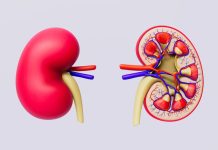
Periodontal (gum) disease is an infection of the tissues that hold your teeth in place.
It’s typically caused by poor brushing and flossing habits that allow plaque—a sticky film of bacteria—to build up on the teeth and harden.
In advanced stages, periodontal disease can lead to sore, bleeding gums; painful chewing problems; and even tooth loss.
Our mouths are full of bacteria. These bacteria, along with mucus and other particles, constantly form a sticky, colorless “plaque” on teeth.
Brushing and flossing help get rid of plaque. Plaque that is not removed can harden and form “tartar” that brushing doesn’t clean. Only a professional cleaning by a dentist or dental hygienist can remove tartar.
There are a number of risk factors for gum disease, but smoking is the most significant. Smoking also can make treatment for gum disease less successful.
Other risk factors include diabetes; hormonal changes in girls and women; diabetes; medications that lessen the flow of saliva; certain illnesses, such as AIDS, and their medications; and genetic susceptibility.
Symptoms of gum disease include: Bad breath that won’t go away. Red or swollen gums. Tender or bleeding gums. Painful chewing. Loose teeth. Sensitive teeth. Receding gums or longer appearing teeth.
The main goal of treatment is to control the infection. The number and types of treatment will vary, depending on the extent of the gum disease.
Any type of treatment requires that the patient keep up good daily care at home. The dentist may also suggest changing certain behaviors, such as quitting smoking, as a way to improve your treatment results.
You can keep your gums and teeth healthy by: Brushing your teeth twice a day with a fluoride toothpaste.
Flossing regularly to remove plaque from between teeth. Or, you can use a device such as a special brush, wooden or plastic pick, or a “water flosser” recommended by a dental professional.
Visiting the dentist routinely for a check-up and professional cleaning. Quitting smoking.
For more information about how to prevent and reverse gum disease, please check this video:
If you care about gum health, please read studies about an important causes of tooth decay and gum disease, and how often should you get your teeth cleaned.
For more information about gum health, please see recent studies about mouthwash that may increase your tooth damage, and results showing common tooth disease may increase the risk of dementia.
Sign up for our newsletter for more information about this topic.



